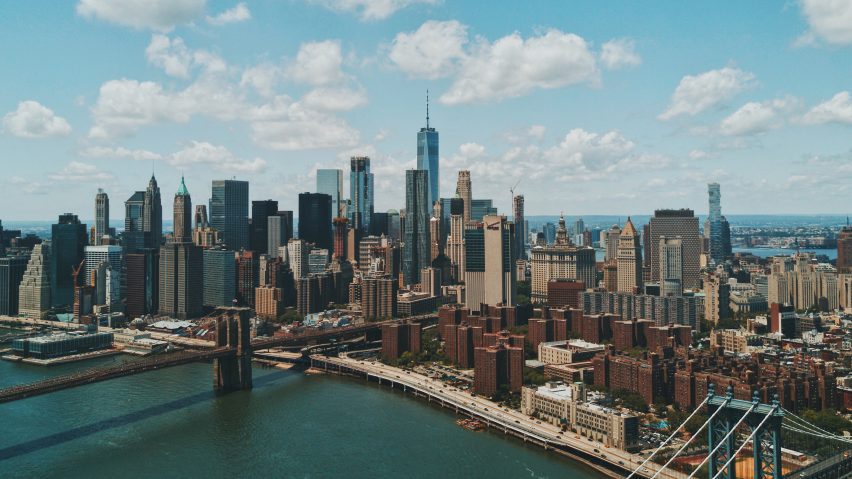
New York City sinking under the weight of its skyscrapers
Researchers have discovered that the mass of buildings in New York City is contributing to it subsiding by one to two millimetres a year, adding to the city's flood risk.
Researchers from the government's US Geological Survey and the Graduate School of Oceanography at the University of Rhode Island calculated the mass of all the buildings in New York City for the study, which they say is the first to look specifically at the contribution of the built environment on subsidence.
Their conclusion is that, depending on the underlying types of soil and foundation modes, the buildings have the potential to sink as much as 600 millimetres.
Every building "could contribute to future flood risk"
This subsidence adds to flood risk, which is already heightened in New York City due to sea level rise and increasing storm intensity, the researchers say.
"As coastal cities grow globally, the combination of construction densification and sea level rise imply increasing inundation hazard," they wrote.
"The point of the paper is to raise awareness that every additional high-rise building constructed at coastal, river, or lakefront settings could contribute to future flood risk, and that mitigation strategies may need to be included."
Titled The Weight of New York City: Possible Contributions to Subsidence From Anthropogenic Sources, the paper was published in the journal Earth's Future and authored by US Geological Survey geophysicist Tom Parsons and University of Rhode Island researchers Pei-Chin Wu, Meng (Matt) Wei and Steven D'Hondt.
The researchers both modelled the rate at which the city is sinking under the mass of its buildings in different areas and compared the results to satellite data to come up with realistic figures.
They found that the city's 1,084,954 buildings have a combined mass of 760 billion kilograms (or 1.68 trillion pounds) distributed over an area of 778.2 kilometres and with an average building mass of 704,000 kilograms (1.55 million pounds).
In areas of soft, clay-rich soil and artificial fill, they found the greatest potential subsidence, ranging from 75 to 600 millimetres, with a median of 294 millimetres. The lowest impact is in areas where all the foundations are anchored to bedrock, bringing subsidence close to zero.
New York City emblematic of all coastal cities
The researchers made clear that the built environment is just one of several factors contributing to subsidence in New York City. There is also the natural settling of land, as well as other human-led causes such as the extraction of groundwater.
They also warned that the issues faced by New York City are repeated everywhere where densely built areas are situated close to coastlines.
"New York is emblematic of growing coastal cities all over the world that are observed to be subsiding, meaning there is a shared global challenge of mitigation against a growing inundation hazard," they wrote.
The global rate of sea level rise has more than doubled from 1.4 millimetres per year throughout most of the 20th century to 3.6 millimeters per year from 2006 to 2015, according to the US National Oceanic and Atmospheric Administration (NOAA).
The same agency also found that sea level rise could drive a twenty-fold increase in seasonal coastal flooding episodes in New York City by the end of the 21st century.
According to the Second Sea calculator, an app that makes use of real-world data to chart the expected sea level rise for various cities, New York can expect a rise of between 29 and 32 centimetres by 2050, depending on the degree of global warming.
Photo by Patrick Tomasso on Unsplash.